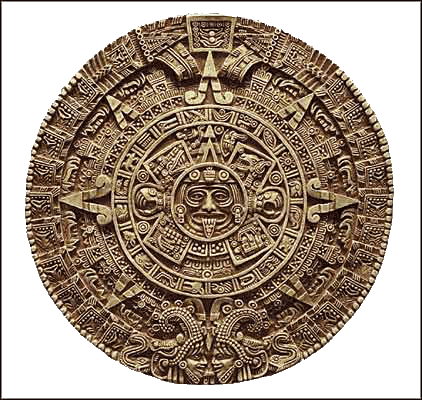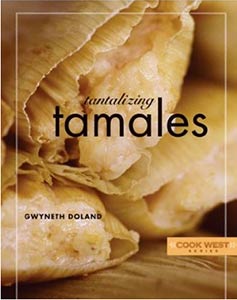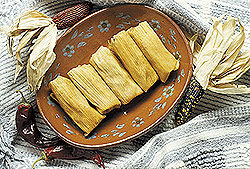Most of us have seen pictures of the Mayan calendar at some point: that round stone disc carved with a dense assortment of creepy-looking faces and strange symbols. Known as the Mayan Long Count Calendar, it is a wonderfully complex system that spans around 5,200 years and is of huge spiritual significance to the Maya people. The final cycle of the calendar—the 13th b’aktun—will end on Dec. 21.
 If you listen to the Guatemalan government, or to any of the hundreds of doomsday-promoting websites out there, the end of this calendar corresponds to: the collision of earth with a giant (invisible) asteroid; the reversal of the magnetic poles (a natural event that happens every 750,000 years or so); or (fill in your worst nightmare here).
If you listen to the Guatemalan government, or to any of the hundreds of doomsday-promoting websites out there, the end of this calendar corresponds to: the collision of earth with a giant (invisible) asteroid; the reversal of the magnetic poles (a natural event that happens every 750,000 years or so); or (fill in your worst nightmare here).
NASA, that notorious spoiler of doomsday prophecies, had this to say about the imminent non-apocalypse: “There are no planetary alignments in the next few decades, Earth will not cross the galactic plane in 2012, and even if these alignments were to occur, their effects on the Earth would be negligible. Each December the Earth and sun align with the approximate center of the Milky Way Galaxy but that is an annual event of no consequence,” says the U.S. space agency.
Even the modern Mayan descendants of the inventors of the calendar reportedly are pissed off that the Guatemalan government is promoting the end of the calendar/end of the world scenario as a way of making a few extra bucks off the media hype. According to Discovery News, Felipe Gomez, leader of the Maya alliance Oxlaljuj Ajpop said, “We are speaking out against deceit, lies and twisting of the truth, and turning us into folklore-for-profit. They are not telling the truth about time cycles.” Instead, the group says the end of the calendar signifies that “there will be big changes on the personal, family and community level, so that there is harmony and balance between mankind and nature.” Hey, that doesn’t sound like doomsday at all.
Good or bad, what if something big is going to happen? Maybe those ancient Mayas knew more than we give them credit for. In the interest of hedging our bets—and because it’s just a great excuse for a non-Christmas-themed party—why not throw a shindig celebrating the End of the Mayan Calendar? And the perfect food to serve at a Mayan party? Tamales and chocolate!
 The Maya loved their chocolate, and believed it was a drink suitable only for nobility. These days, anybody can drink chocolate, thank goodness. Here’s an excellent recipe for New Mexican Hot Chocolate, which combines chocolate with red chile, as the ancient Maya did. Royal Chocolate with Chile is another version of hot chocolate that is very similar to what the Maya drank.
The Maya loved their chocolate, and believed it was a drink suitable only for nobility. These days, anybody can drink chocolate, thank goodness. Here’s an excellent recipe for New Mexican Hot Chocolate, which combines chocolate with red chile, as the ancient Maya did. Royal Chocolate with Chile is another version of hot chocolate that is very similar to what the Maya drank.
You can read more about how the Maya cooked tamales, and make up a batch of your own authentic Mayan Pork Tamales for the holidays in Dave’s article here.
Gwyneth Doland writes in her book, Tantalizing Tamales: “Although we don’t know for sure the exact origin of  tamales we can see from pots and carvings that, for the ancient Mayans, tamales were their daily bread. (The word comes from the Nahuatl tamalii and tamal is the correct singular form, but tamale is more common.) Researchers believe it is likely that tamales originated in Mesoamerica and eventually spread throughout Latin America and beyond. As an ancient precursor to fast food, the supremely portable tamale provided satisfying and nutritious meal for people on the go—and it still does. Tamales are a popular menu item in Latin American and Mexican restaurants and market stalls, but for most home cooks, the effort required to prepare tamales (as opposed to tacos or burritos) means they are mostly made on celebration days. Christmas, New Year’s, the Day of the Dead, weddings, birthdays and baptisms are often celebrated with a feast of tamales.” You can buy Tantalizing Tamales at Amazon.com, but in the meantime here’s Gwyneth’s interesting spin on traditional tamales, Grilled Green Chile Cheese Tamales with Avocado Cream.
tamales we can see from pots and carvings that, for the ancient Mayans, tamales were their daily bread. (The word comes from the Nahuatl tamalii and tamal is the correct singular form, but tamale is more common.) Researchers believe it is likely that tamales originated in Mesoamerica and eventually spread throughout Latin America and beyond. As an ancient precursor to fast food, the supremely portable tamale provided satisfying and nutritious meal for people on the go—and it still does. Tamales are a popular menu item in Latin American and Mexican restaurants and market stalls, but for most home cooks, the effort required to prepare tamales (as opposed to tacos or burritos) means they are mostly made on celebration days. Christmas, New Year’s, the Day of the Dead, weddings, birthdays and baptisms are often celebrated with a feast of tamales.” You can buy Tantalizing Tamales at Amazon.com, but in the meantime here’s Gwyneth’s interesting spin on traditional tamales, Grilled Green Chile Cheese Tamales with Avocado Cream.
 This recipe for Mayan Turkey Tamales is from the Legacy Program at the University of Texas at San Antonio’s Center for Archaeological Research. It’s about as authentic as you can get.
This recipe for Mayan Turkey Tamales is from the Legacy Program at the University of Texas at San Antonio’s Center for Archaeological Research. It’s about as authentic as you can get.
Pipián Rojo (Red Pipián Sauce) is a saucing alternative for tamales. The chiles, tomatoes, and squash seeds make this a very New World dish, as squash has been a staple of the Mexican diet since it was domesticated millennia ago. Typically, cooked chicken or turkey is added to this sauce from southern Mexico.




